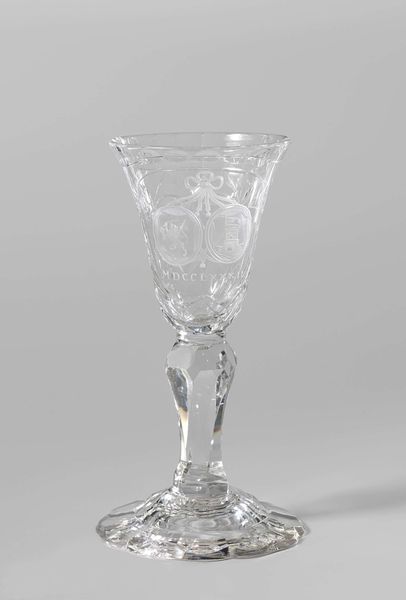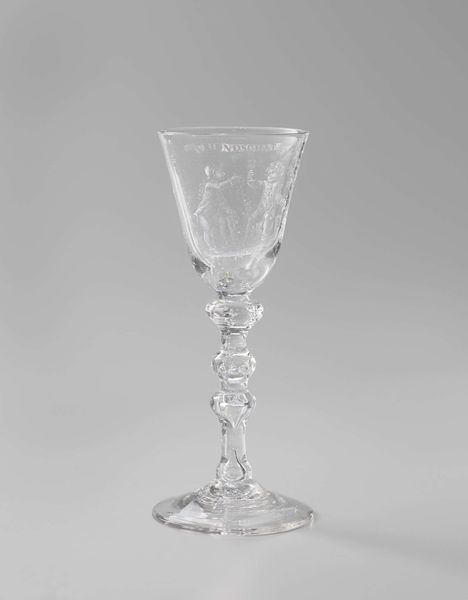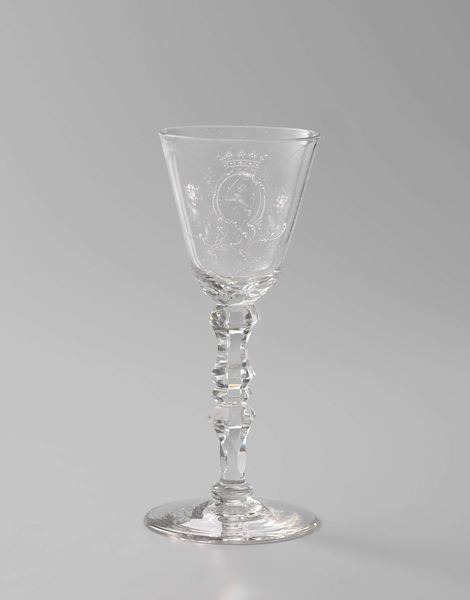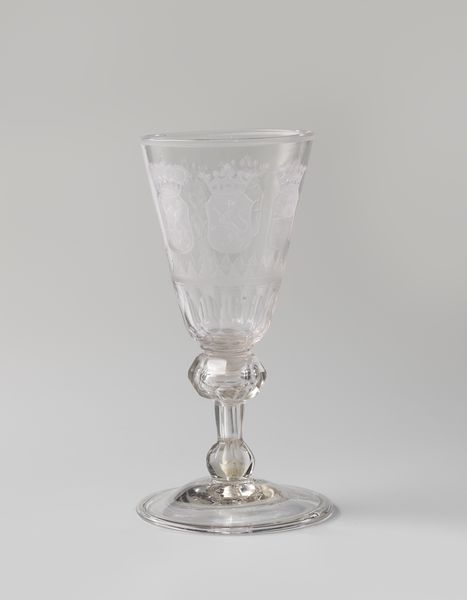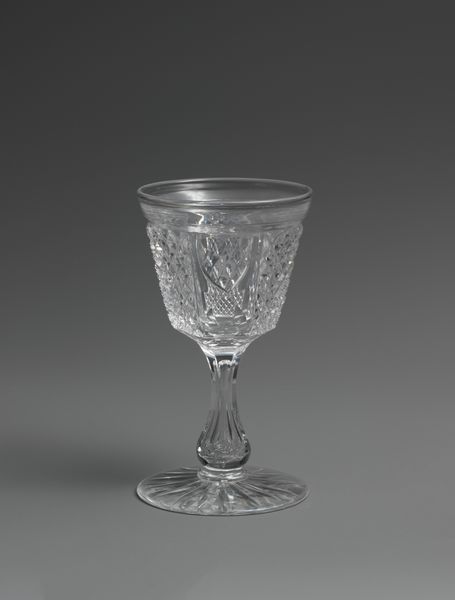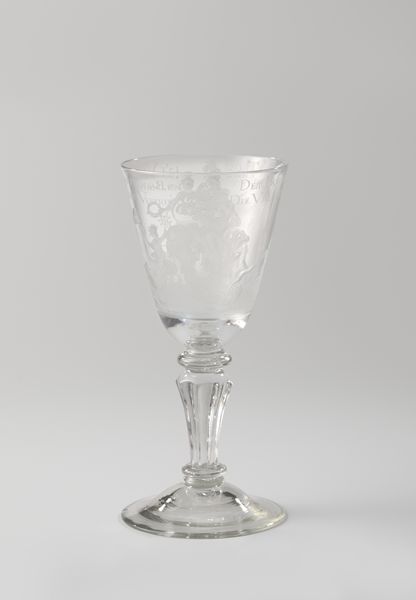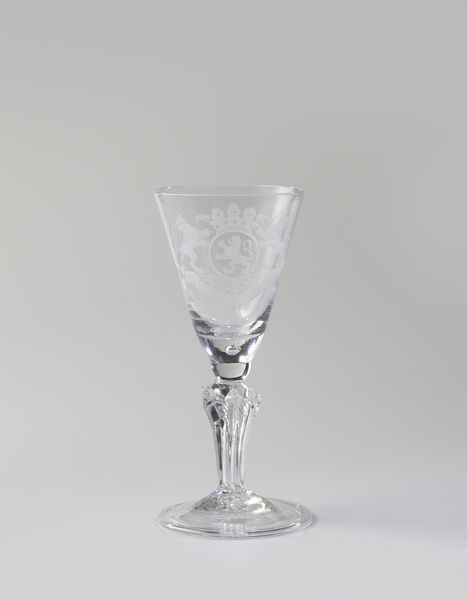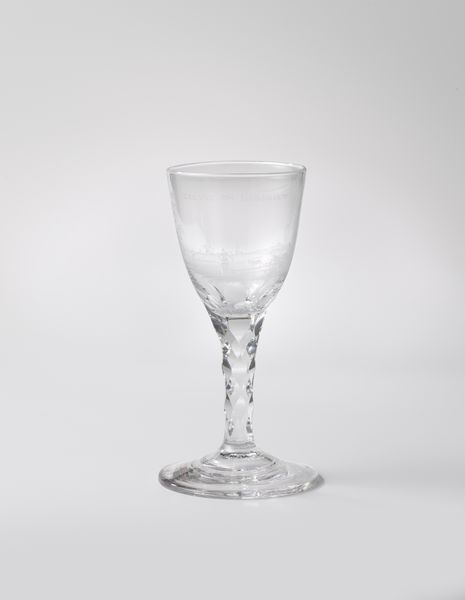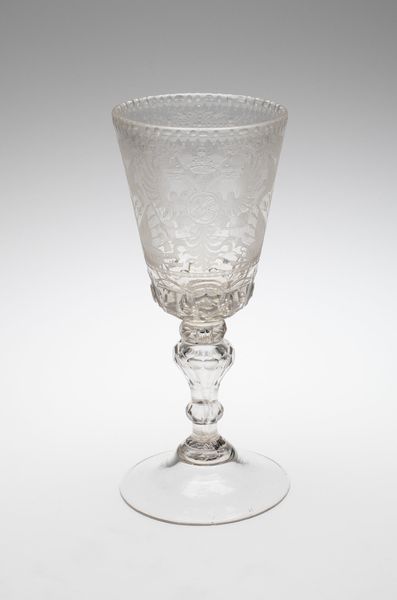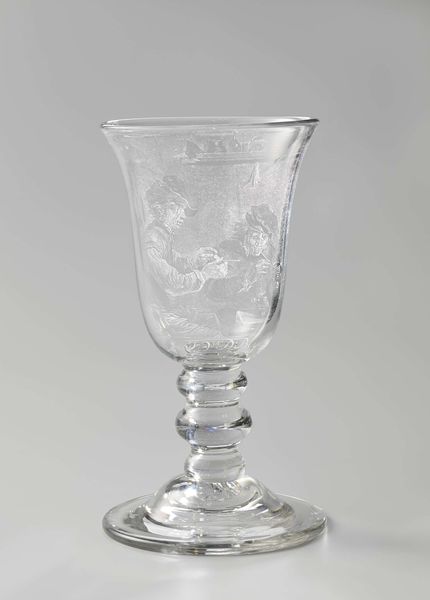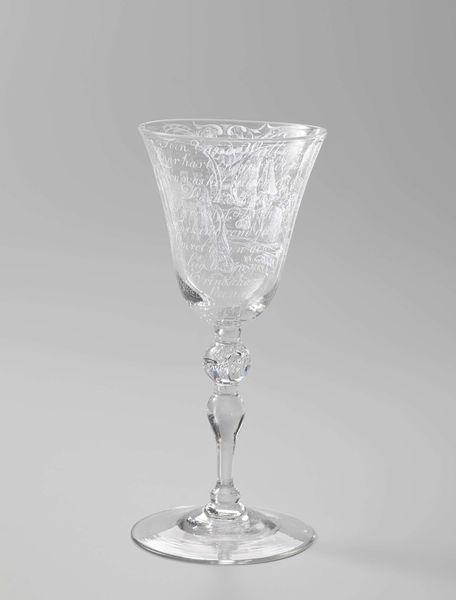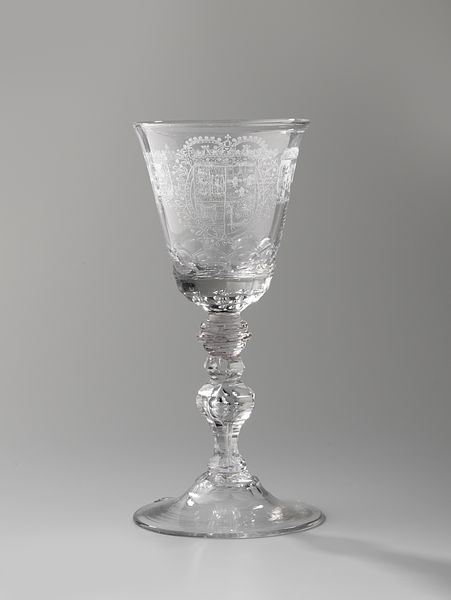
glass, engraving
#
baroque
#
glass
#
decorative-art
#
engraving
Dimensions: height 17.0 cm, diameter 8.3 cm
Copyright: Rijks Museum: Open Domain
Curator: What we have here is an engraved wine glass, estimated to have been made sometime between 1730 and 1750. The piece, whose maker remains anonymous, features the arms of William IV. Editor: My first thought is that it seems deceptively delicate, like it would shatter with the slightest touch. I find the intricate patterns somewhat unsettling. Curator: The glass itself speaks volumes, doesn't it? The form, its transparency—qualities that held particular significance during the Baroque period. Light, clarity, and display of status are key. Editor: Definitely. This was meant to showcase power. William IV's coat of arms etched so permanently onto the vessel...a potent statement about inheritance and authority. Is it trying too hard? Curator: Perhaps. Consider the period. Royal arms were deliberately invoked to suggest enduring legacies. Every element of the coat of arms would have resonated deeply: lions suggesting courage, the motto indicating his familial principles. Editor: I’m also curious about who might have used this glass. How did its function influence or impact the messages it conveyed to guests or other beholders? Did drinking from this vessel give the wielder the same bravado that a lion symbolizes? Curator: An interesting observation. I’d argue its primary function was spectacle, not just utility. Imagine it reflecting candlelight during an important meeting... projecting a specific vision of majesty and lineage onto its user. Editor: Yes, that's well said. And it all ties back into its materiality. Glass is essentially melted sand made precious through human touch and artistry—a visual testament to class, skill, and labor that made an indelible mark at the Rijksmuseum and in cultural memory, regardless of the original artist. Curator: Indeed. It's an enduring, fragile encapsulation of historical ambition, perfectly displayed through potent visual symbolism. Editor: I agree, the glass certainly serves as a reflective artifact of its period. The engraved royal symbols become even more interesting when considering our own perspectives on legacies of leadership.

